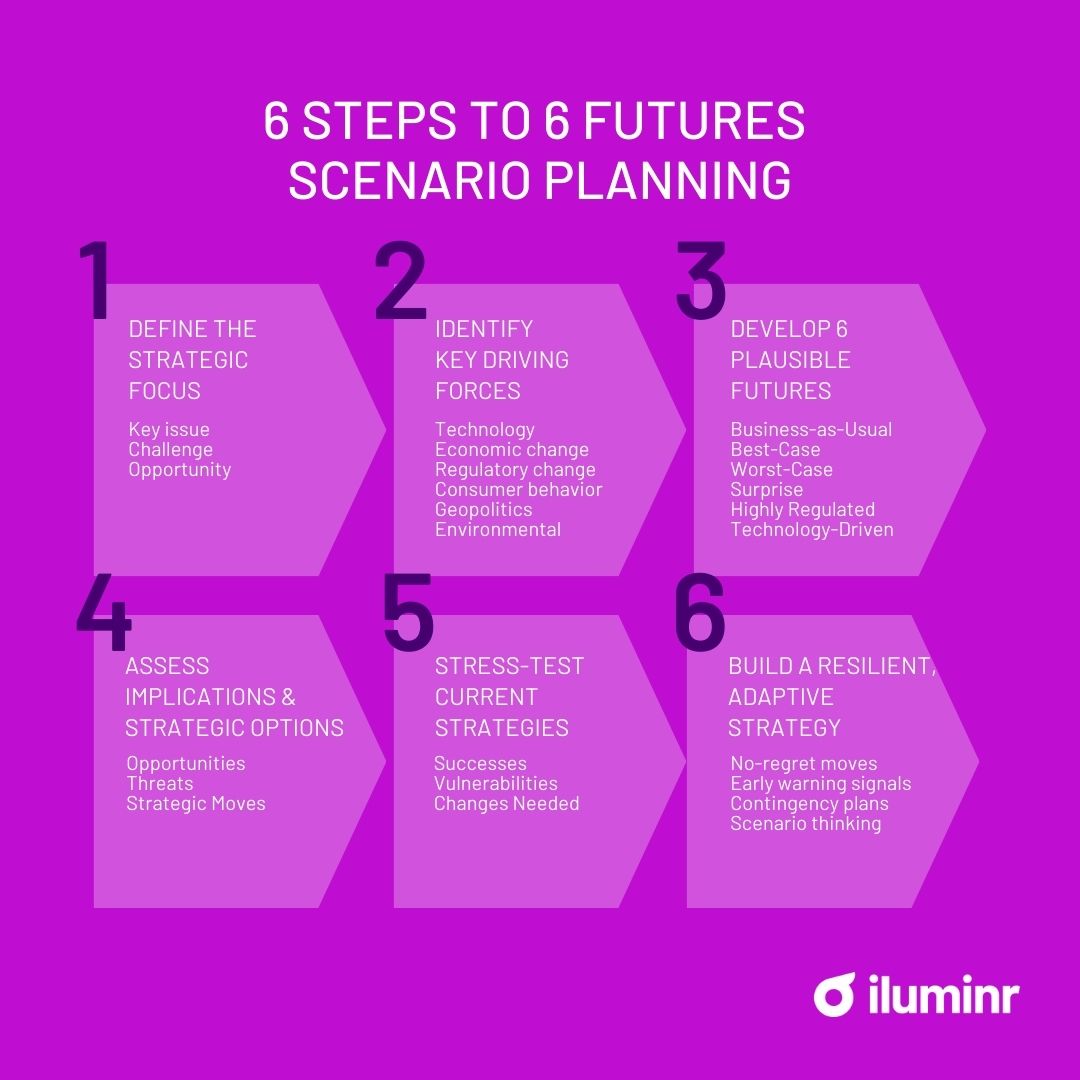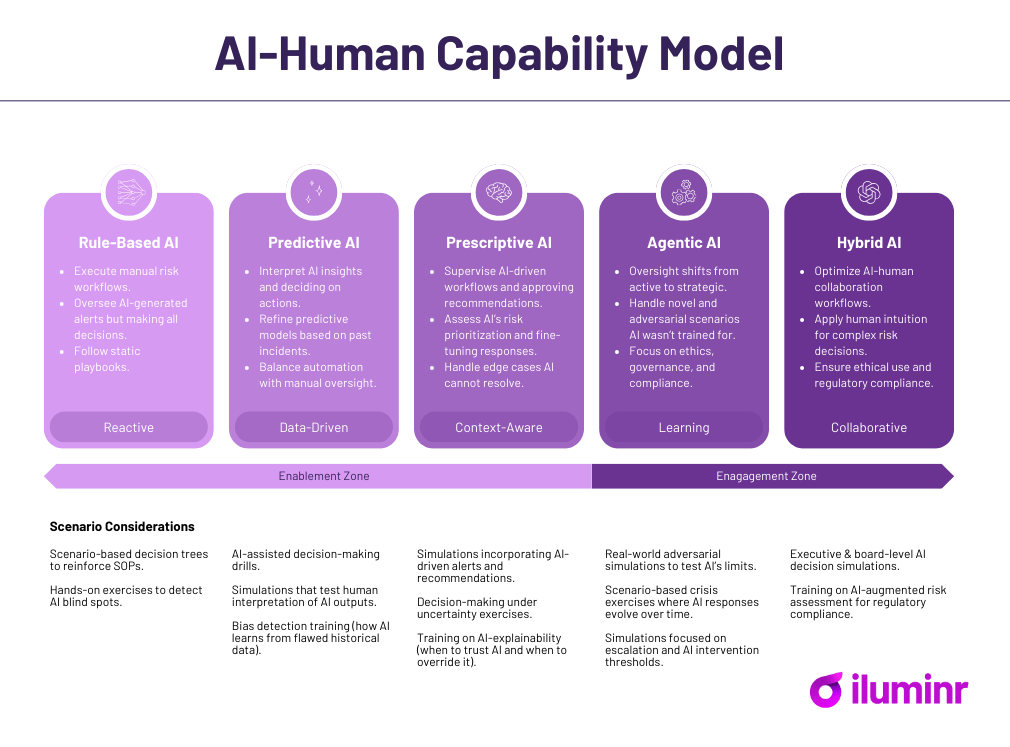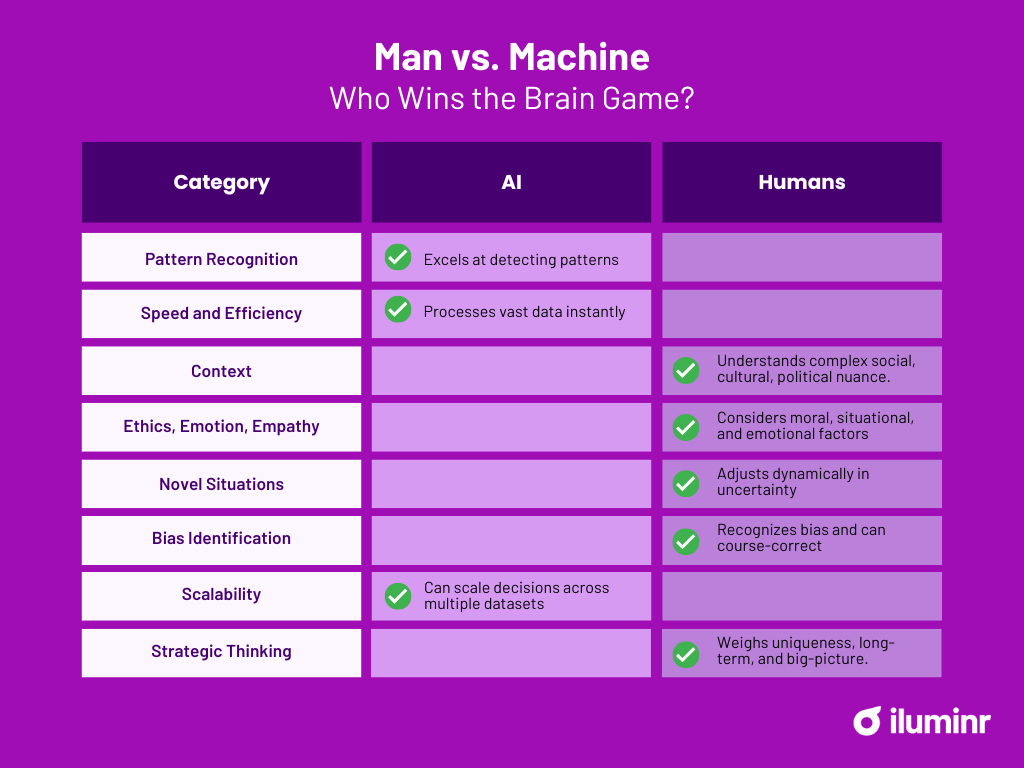In Future-Proof 2025 – Risk and Learning Trends Every Leader Should Know, we explored key trends shaping risk management and learning, focusing on how leaders can build adaptable, resilient teams in an era of rapid change.
As we move into 2025, organizations face a myriad of both new threats, where traditional methods of training and response planning often fall short.
Here’s a breakdown of the top insights from the discussion.
1. Scenario Thinking: Strengthening Decision-Making in Uncertain Times
Organizations are increasingly leaning into scenario-based approaches to navigate risk and uncertainty. Traditional playbooks and static crisis plans no longer work in a world where AI-generated disinformation, cyberattacks, and geopolitical disruptions unfold in unpredictable ways.
Some of the key questions organizations must ask:
- Should automation always take precedence in time-sensitive crises?
- How do we respond to AI-generated deepfake disinformation about our brand?
- How do we balance efficiency and resilience in dual crises?
- How can we design more effective systems that account for the principles of behavioral science?
This trend underscores the need for dynamic, evolving strategies where teams actively engage in scenario thinking as part of BAU, not a standalone exercises.
2. Making Learning Stick in a Fast-Moving World
With information overload at an all-time high, organizations must rethink their approach to training. Microlearning is emerging as a key solution, breaking complex topics into digestible, engaging experiences that drive retention and behavior change.
Key Stats on Microlearning Effectiveness:
- Increases engagement rates by 50%
- Improves retention to 80%
- Cuts training time by up to 60%
- Reduces cognitive overload by 50%
Rather than treating learning as a one-time event, organizations are embedding microlearning into daily workflows, ensuring teams build capability over time. Formats range from quick decision-making scenarios during team stand-ups to role-specific incident response drills.
3. Operational Adaptivity: The New Currency of Resilience
In the field of resilience, often the focus is restoring to business as usual. “Just keep going,” is a common slogan. But in the face of change, sometimes the objective is adapting to a new known state. But there is an important distinction to be made between times when resilience is needed, times when adaptability is needed, and the interdependence of both. Leaders and organizations need to be both resilient and adaptable to weather disruption.
As a result, the best performing organizations are shifting from static resilience plans to continuous improvement cycles that enhance insights, efficiency, and engagement.
Challenges organizations face today:
- Lack of data to measure and report response capability
- High costs associated with traditional training and tabletops
- Low engagement in compliance and critical response training
By leveraging microlearning like Microsimulations, organizations can overcome these hurdles and create a resilience flywheel—a system where capability-building becomes an ongoing process, not a checkbox exercise.
4. AI Sidekicks & Agentic AI: The Future of Risk and Learning
AI’s role in risk management is evolving beyond automation. The rise of Agentic AI—AI that can make decisions and adapt based on real-time data—is transforming how organizations handle crises.
What this means for leaders:
- AI will enable faster, more informed decision-making.
- AI-driven risk detection and response will become more dynamic and adaptive.
- Organizations must integrate AI in ways that enhance, rather than replace, human expertise.
This trend highlights the importance of scenario-based AI training, ensuring that teams understand when to trust AI and when to override automated decisions. Scenarios and simulations can be an effective tool in helping teams evolve policy, procedure, train teams, and validate over time with technological advancements and learning.
AI is reshaping decision-making, but there are still areas where human intuition prevails. Try this interactive guessing game (or check out the results below) — who made the call first, AI or humans?
- Financial Crisis Prediction (2008) – Human
Economist Nouriel Roubini warned of the housing market crash before AI models caught on. - Cybersecurity Threat Detection (2020) – AI
Microsoft’s AI system detected unusual activity in the SolarWinds hack before human analysts pieced it together. - Self-Driving Car Dilemma (2016) – AI
Tesla’s Autopilot failed to recognize a white truck against the bright sky, leading to a fatal crash. - COVID-19 Outbreak Warning (2019) – AI
The Canadian AI system BlueDot flagged pneumonia cases in Wuhan nine days before WHO issued an alert. - Netflix’s ‘House of Cards’ Decision – AI
AI-driven analytics predicted audience engagement, leading Netflix to invest in the series before human producers stepped in.
AI may be fast and data-driven, but human oversight remains critical for ethics, intuition, and strategic judgment.
What decisions in your industry should AI assist—but not own?
5. Human-Curated Experiences: The Art and Science of Decision-Making
While AI is becoming a powerful tool, human intuition, judgment, and ethical reasoning remain irreplaceable. The most effective risk management approaches will combine technology with human-led decision-making frameworks.
Key takeaway:
AI is a sidekick, not a replacement. Organizations must build hybrid approaches where AI augments decision-making, but humans remain in control of critical risk-based choices.
Final Thoughts: Preparing for 2025 and Beyond
The Future-Proof 2025 webinar reinforced that in resilience, you cannot always avoid disruption. You must prepare to adapt for anything. By embracing scenario-based training, microlearning, adaptive resilience strategies, and AI-human collaboration, leaders can future-proof their organizations in increasingly turbulent times.
Want to see these principles in action? Contact us to explore how Microsimulations can help your team train smarter, respond faster, and build capability that adapts with change.




















